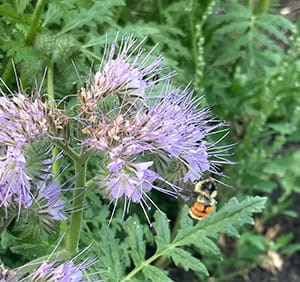HUMBOLDT — In Saskatchewan, increasing prices for land and crop inputs have forced farmers to take a hard look at their operations and make the most of every farmable acre. Unexpectedly, maximizing efficiency has resulted in some acres 小蓝视频 taken out of cash crop production and used for other things. After all, why continue to farm acres that consistently give you a negative economic return? To complement the quest for maximum economic efficiency, academic and applied research institutions have proven there is a positive environmental benefit to putting marginal acres into forage. Some benefits include improved nutrient and water cycling, hosting beneficial insect populations that boost yield in adjacent acres, wildlife habitat, carbon sequestration and many more.
As we gain a clearer understanding of the many benefits of putting marginal acres into forage, the question becomes, “How can we maximize the environmental services these areas provide by strategically selecting forage species?”
With the recent attention that novel polycrop blends have been getting, ministry staff have partnered with to understand how these polycrop blends perform in marginal areas when compared to the industry standard—perennial forages. Additionally, we wanted to tailor the species included in the blends so they could be sold for livestock feed while providing habitat for pollinators and beneficial insects. This demonstration project, Building Resilient Agricultural Croplands 20220507, is funded through the program and will run for three years.
Plots at the three producer-partner sites were seeded this spring to either a perennial blend or an annual/biennial cover crop blend. Soil tests, feed tests, species composition analyses and pollinator assessments will be compared across the two treatments and control plot at each site. The control plot consists of the regular annual cropland surrounding the marginal acres. The goal is to understand how short-term forages compare to perennial forages when included in rotations to address soil challenges in those marginal acres, while also providing a diversified income and habitat for beneficial insects.
Stay tuned for more information on this demonstration project, or you can contact the Agriculture Knowledge Centre at 1-866-457-2377 to learn more.
Hillary Luchinski, AAg. is Agri-Environmental Specialist with the Saskatchewan Ministry of Agriculture in Humboldt.
Bookmark SASKTODAY.ca, Saskatchewan's home page, at this link.




